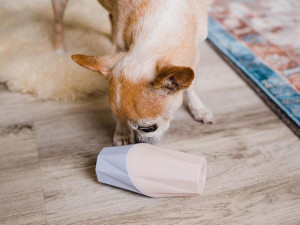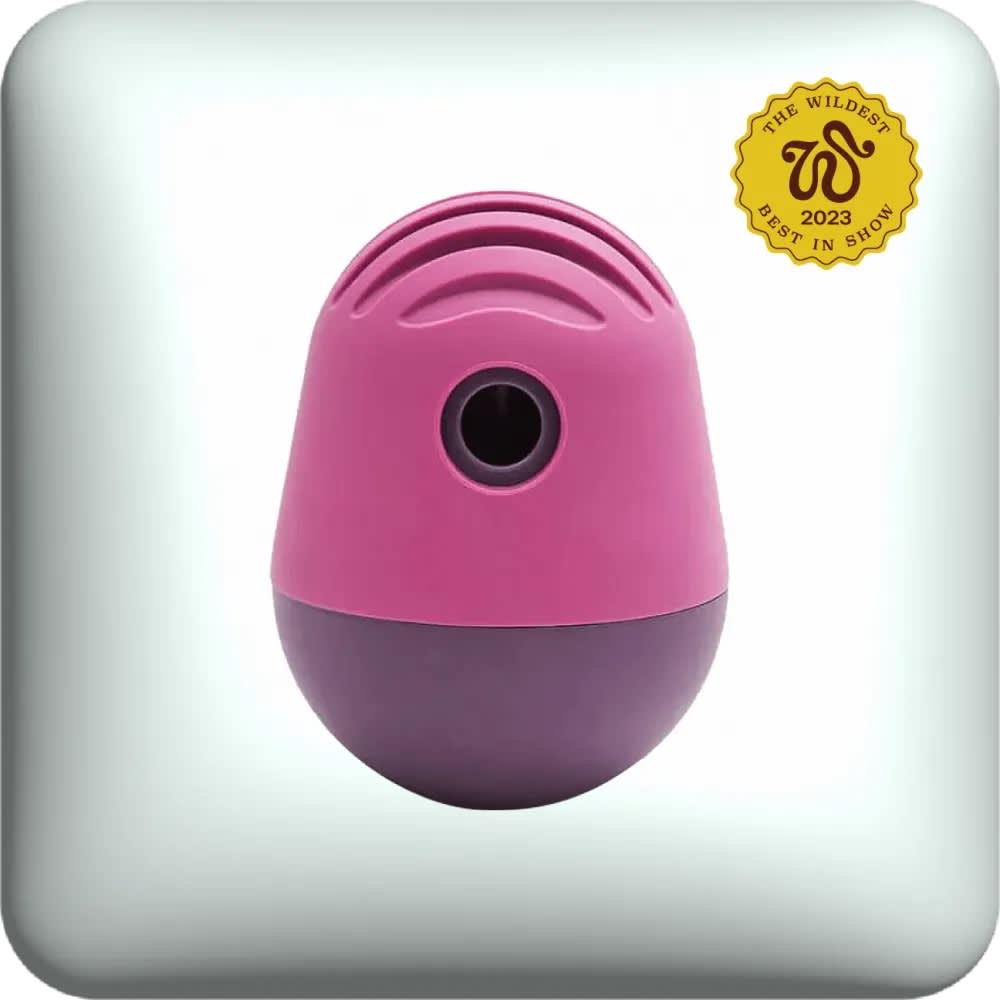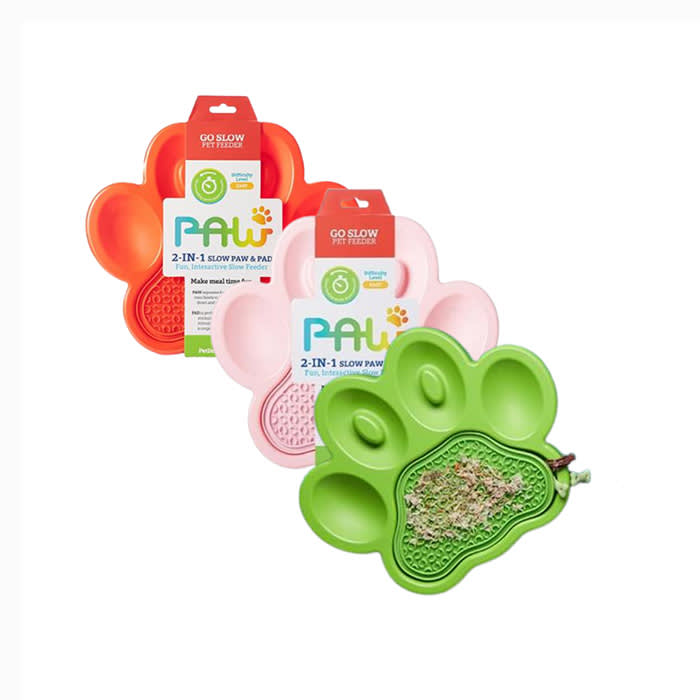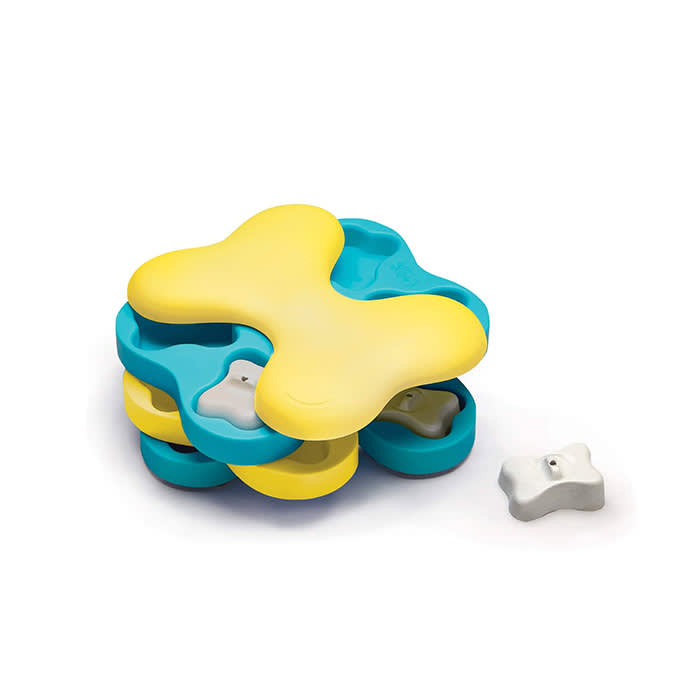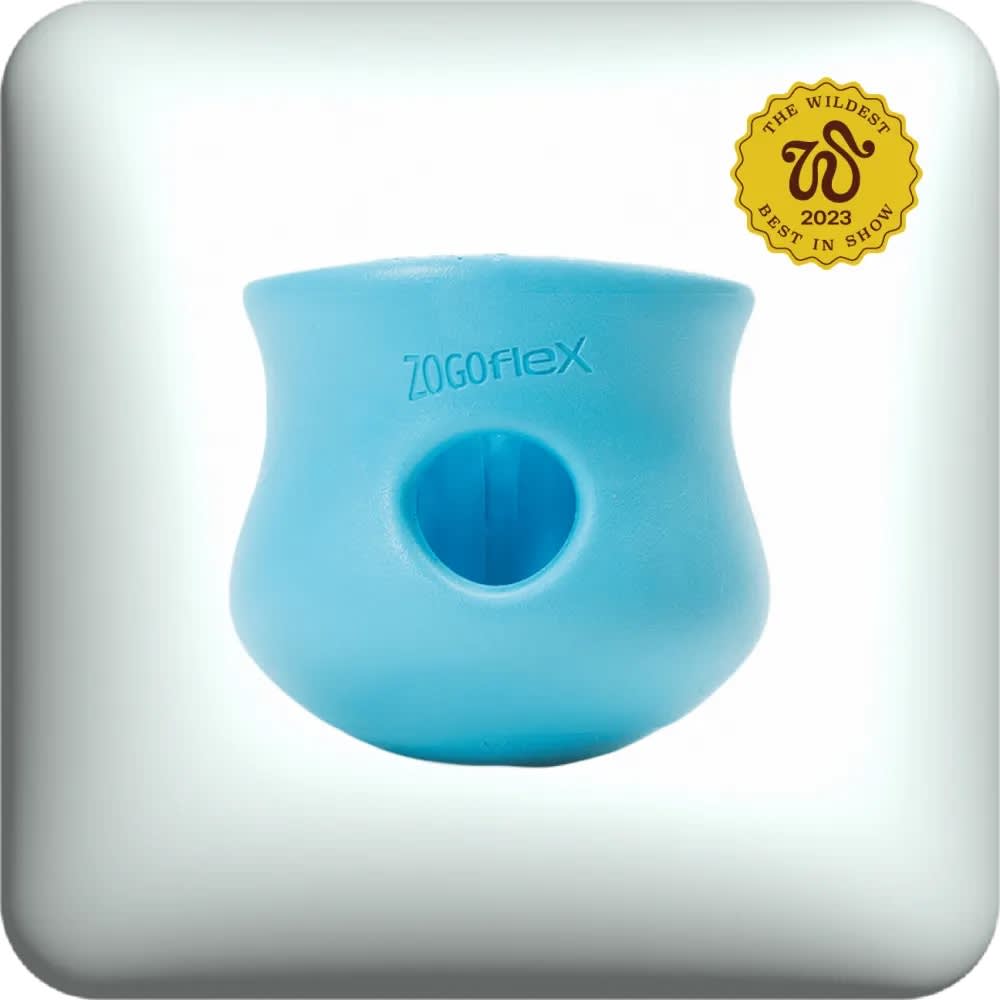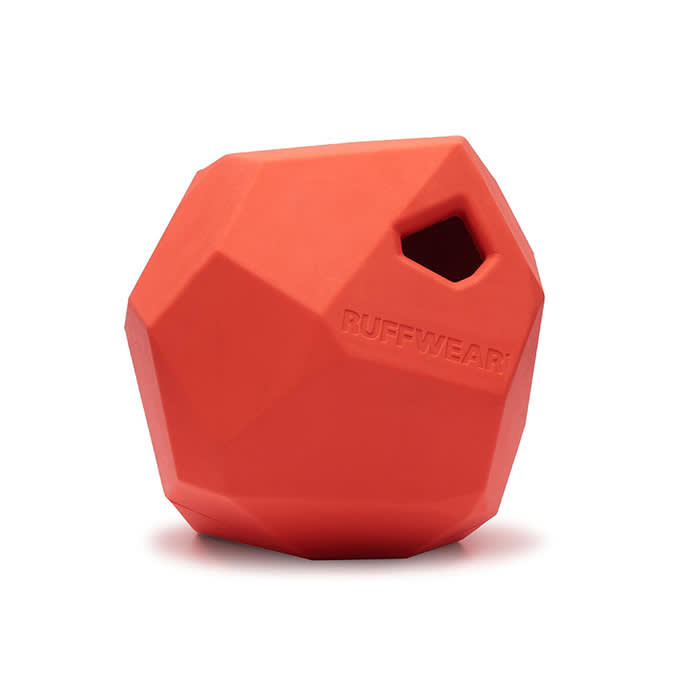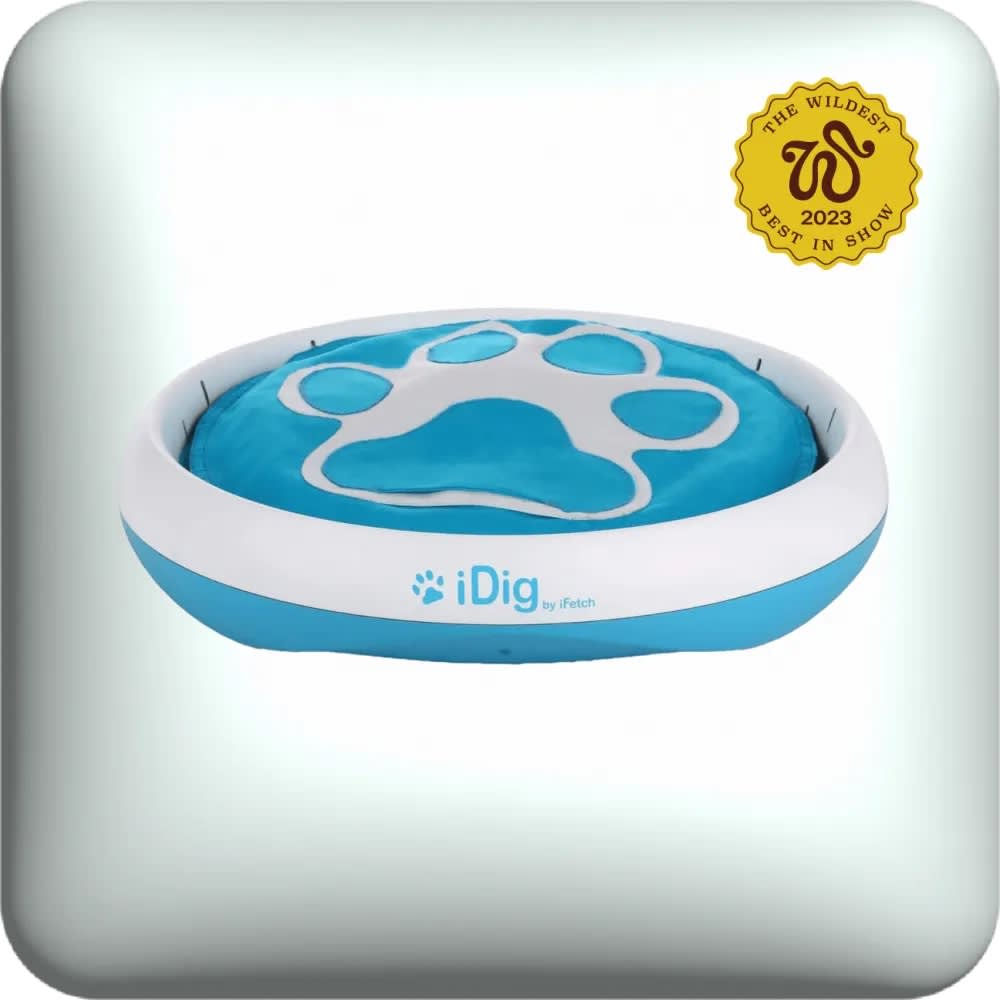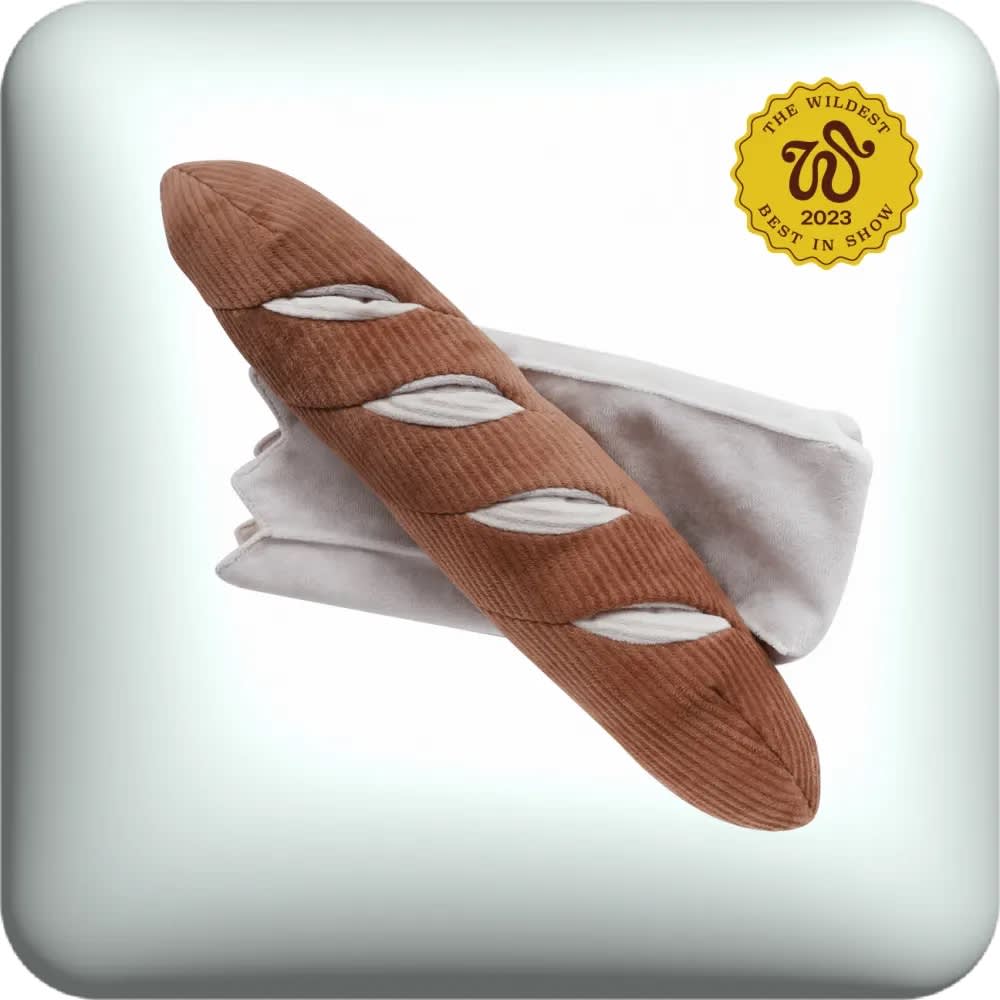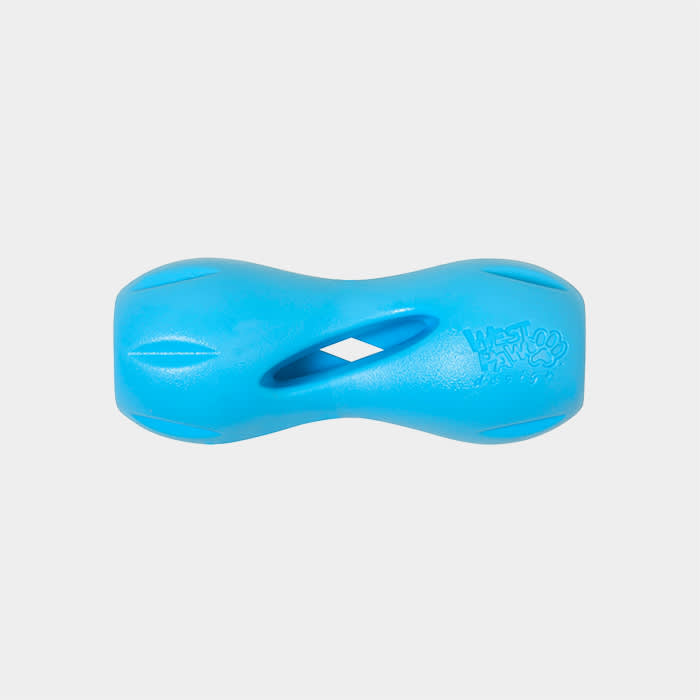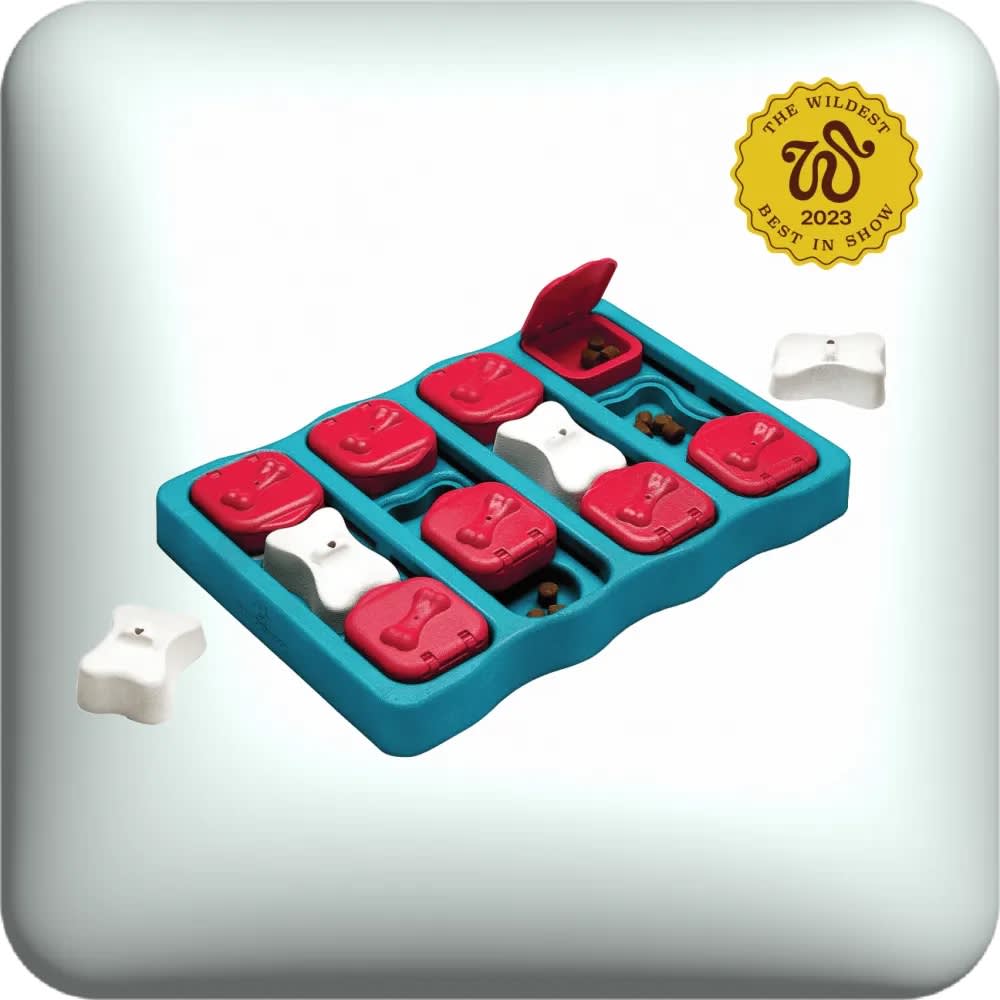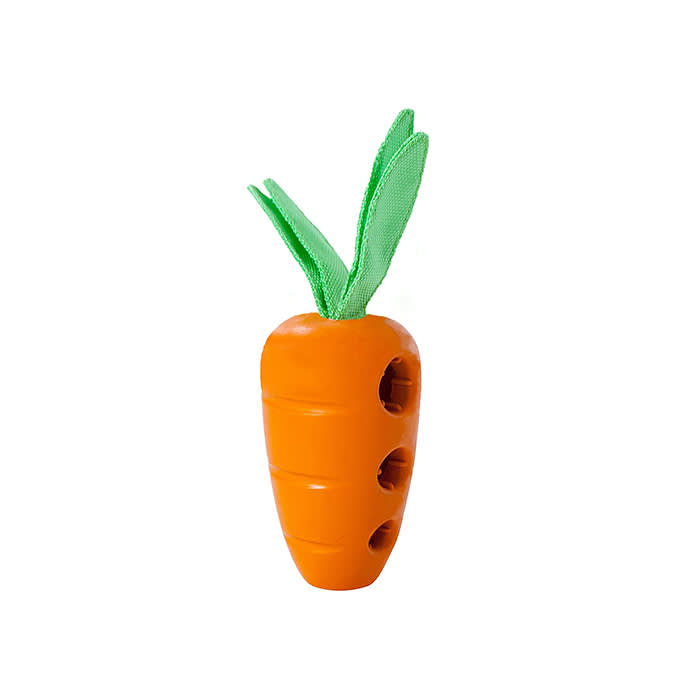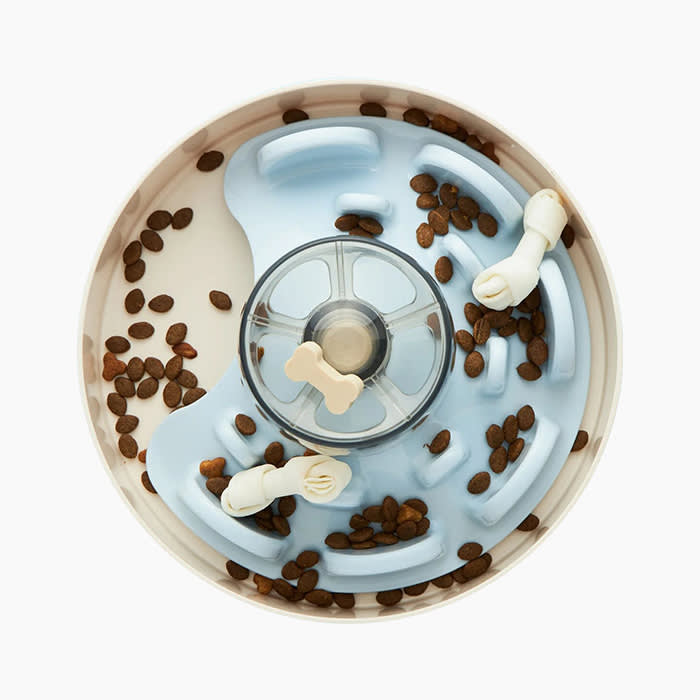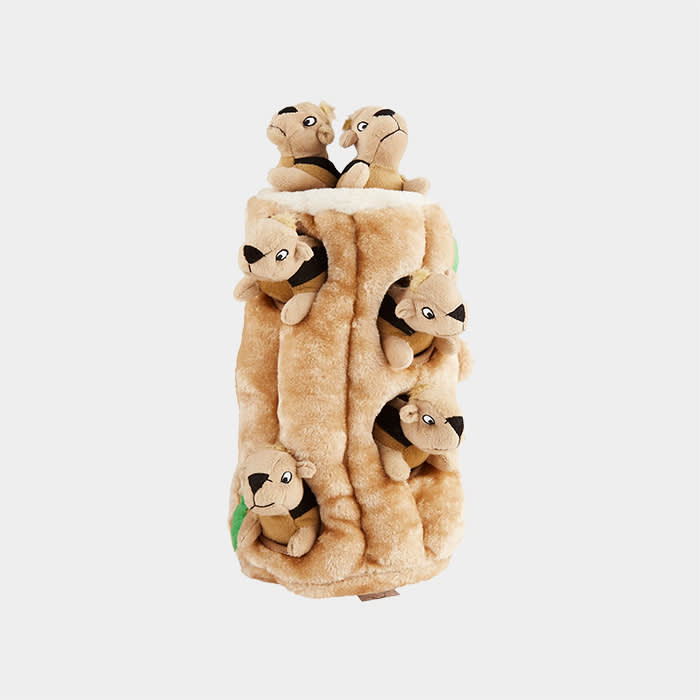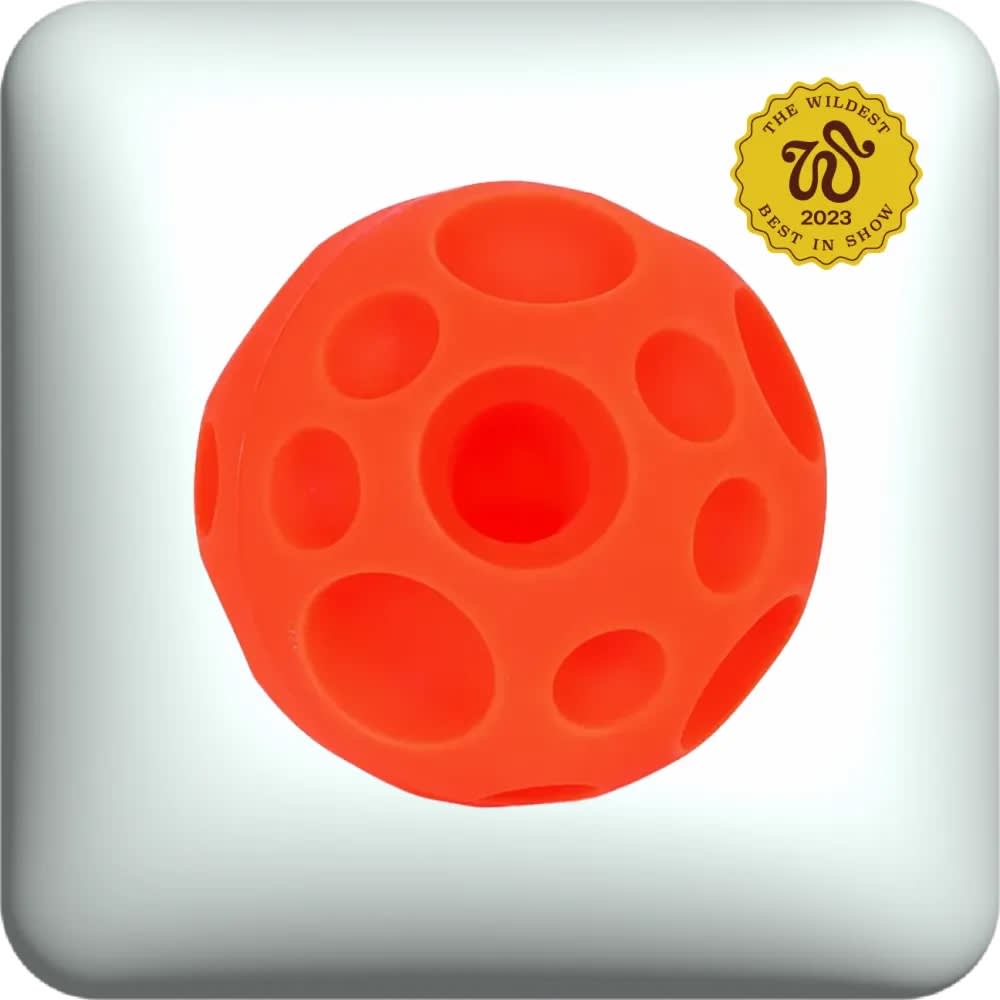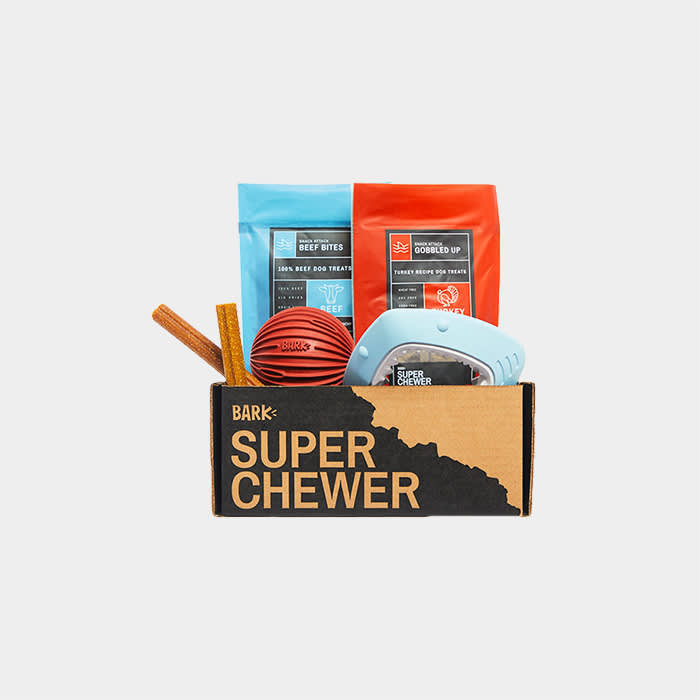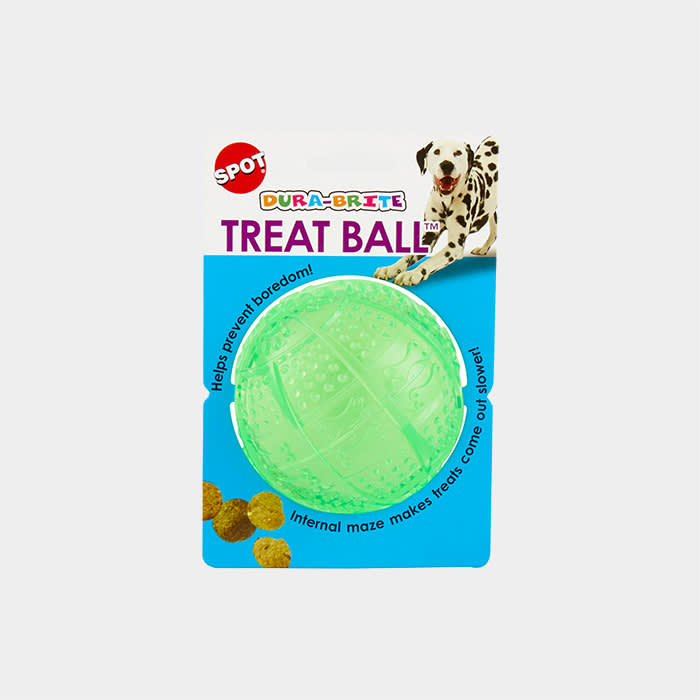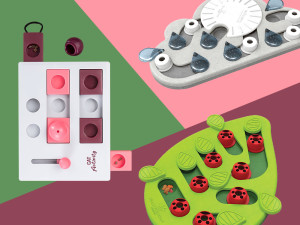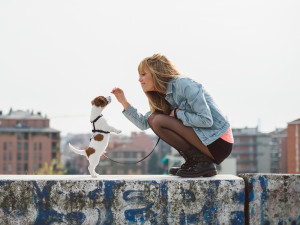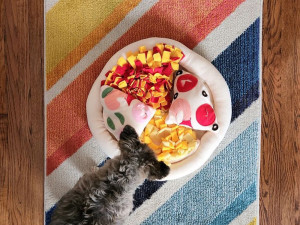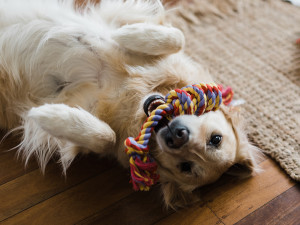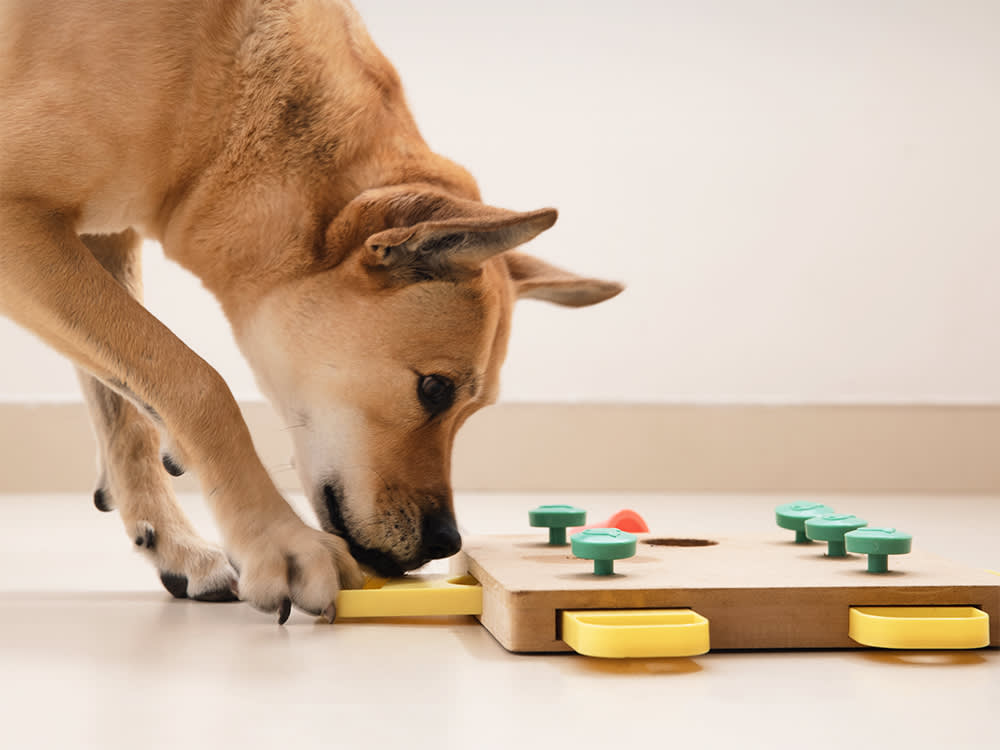
share article

Your pet wants you to read our newsletter. (Then give them a treat.)
It’s a classic scenario: You’re trying to focus on an important task — like cooking, working, or catching up on Survivor — and your pup is wanting all the attention…all the time. If you have a restless dog with a lot of energy to burn, dog puzzle toys and brain games are a great solution.
“Many dogs are under-stimulated and under-exercised...or pretty bored. They don’t have phones or watch TV,” says Stacy Alldredge, certified dog trainer, behaviorist, and founder of Who’s Walking Whoopens in a new tab. Dog puzzles and “interactive toys are a great way to give your dog something to do. They’re also a way for kids to do something with a dog that doesn’t make them mouthy and jumpy.”
Types of interactive and puzzle dog toys
In addition to the mental stimulation that a dog gets from interacting with a puzzle toy, playing and chewing releases feel-good chemicals in the brain, which keeps dogs happy, busy, and using up energy. Dog puzzles and interactive toys come in a variety of styles and skill levels that any dog can benefit from.
Durable treat dispensing balls are popular for solitary play. The dog rolls around the ball to release food.
Slow-feeder food cubes and pyramids, such as Kong and Fable Petsopens in a new tab, require dogs to knock over the treat dispenser to get food.
With chew-puzzle toys, dogs need to chew and manipulate the toy to extract their reward.
Treat-puzzle games are interactive dog toys that require pups to flip open doors and lift compartments, using their paws and nose to find the hidden treats.
If your dog needs encouragement, make the toys more appealing by rubbing something tasty on them, such as peanut butteropens in a new tab. When you first introduce your dog to puzzle toys, make it easy for them to get the treats, then gradually increase the difficulty so that they learn how to extract the food. Otherwise, your dog may get frustrated, leading to the opposite of what is intended through enrichment and mental stimulation.
Choosing the best puzzle toy for your dog
Not all toys are the same, and not all dogs will respond to the same toys. If your dog needs activity, try a treat game that slowly dispenses treats or kibble while they chase it around the house (preferably away from where you’re working). “Some dogs will eat out of a puzzle toy but not out of a bowl,” Alldredge says. If your dog does not have that problem, but rather is such a fast eater that they make themselves sick, try a snuffle mat that replicates foraging behavior and slows mealtime down. If your dog needs confidence buildingopens in a new tab, try a simple puzzle game and gradually work them up to more difficult ones.
“A few years ago, I bought one of every dog puzzle game on the market,” Alldredge says. “And wow — some of them, like the Nina Ottossonopens in a new tab ones, were so hard to figure out!” Puzzle toys aren’t just for puppies, either. “The biggest mistake people make is forgetting that adult dogs need entertainment, too.” Below, the top 18 best dog puzzle toys. Let the games begin!
Btw, our editors (and their pets) picked out these products. They’re always in stock at the time we publish, but there’s a chance they’ll sell out. If you do buy through our links, we may earn a commission. (We’ve got a lot of toys to buy over here, you know?)
18 best interactive dog puzzle toys

Marisa Meltzer
Marisa Meltzer has contributed to The New York Times, Vogue, Vanity Fair, and is the author of This Is Big: How the Women Who Founded Weight Watchers Changed the World (and Me). She lives in New York City with her dog Joan.
Related articles
![Three cat puzzles on a colorful pink, burgundy, and green color-block background]() opens in a new tab
opens in a new tabThe Best Puzzles to Unleash Your Cat’s Inner Einstein
Genius takes many forms. Could your cat be one?
![Paw and Spin slow feeder bowl in baby pink with varying kinds of treats on and around it against a blue background]() opens in a new tab
opens in a new tabThe Pet Dream House Wants Your Dog to Play With Their Food
No more cleaning up saliva-covered kibble.
![Young blonde woman with a Jack Russell puppy during spring in the city.]() opens in a new tab
opens in a new tabThe Best Training Treats for Dogs in 2024
The most mouth-watering treats for training your pup.
![Small dark grey puppy sniffing treats from a Pizza Snufflemat by Injoya Pets via Dog and Co]() opens in a new tab
opens in a new tabInjoya Is Giving Pets a Slice of Pizza Heaven
The brand’s snuffle mat gives pups the chance to stuff their faces into a fluffy pizza pie.
![]() opens in a new tab
opens in a new tabThis Pastel Toy Belongs in a Taylor Swift Music Video
Once your dog gets ahold of this gorgeous toy, they’re gonna “need to calm down” for sure.
![Golden Labrador dog laying on its back on the floor with a colorful rope toy in its mouth]() opens in a new tab
opens in a new tab12 Rope Toys Fit For Playful Pups
Two vets on the pros and cons of these canine classics.

